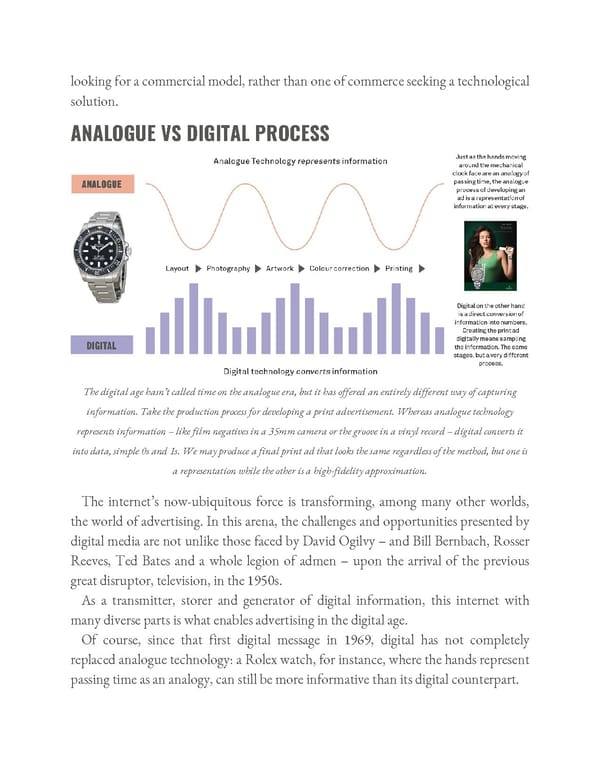looking for a commercial model, rather than one of commerce seeking a technological solution. ANALOGUE VS DIGITAL PROCESS The digital age hasn’t called time on the analogue era, but it has offered an entirely different way of capturing information. Take the production process for developing a print advertisement. Whereas analogue technology represents information – like film negatives in a 35mm camera or the groove in a vinyl record – digital converts it into data, simple 0s and 1s. We may produce a final print ad that looks the same regardless of the method, but one is a representation while the other is a high-fidelity approximation. The internet’s now-ubiquitous force is transforming, among many other worlds, the world of advertising. In this arena, the challenges and opportunities presented by digital media are not unlike those faced by David Ogilvy – and Bill Bernbach, Rosser Reeves, Ted Bates and a whole legion of admen – upon the arrival of the previous great disruptor, television, in the 1950s. As a transmitter, storer and generator of digital information, this internet with many diverse parts is what enables advertising in the digital age. Of course, since that first digital message in 1969, digital has not completely replaced analogue technology: a Rolex watch, for instance, where the hands represent passing time as an analogy, can still be more informative than its digital counterpart.
 Ogilvy on Advertising in the Digital Age Page 18 Page 20
Ogilvy on Advertising in the Digital Age Page 18 Page 20